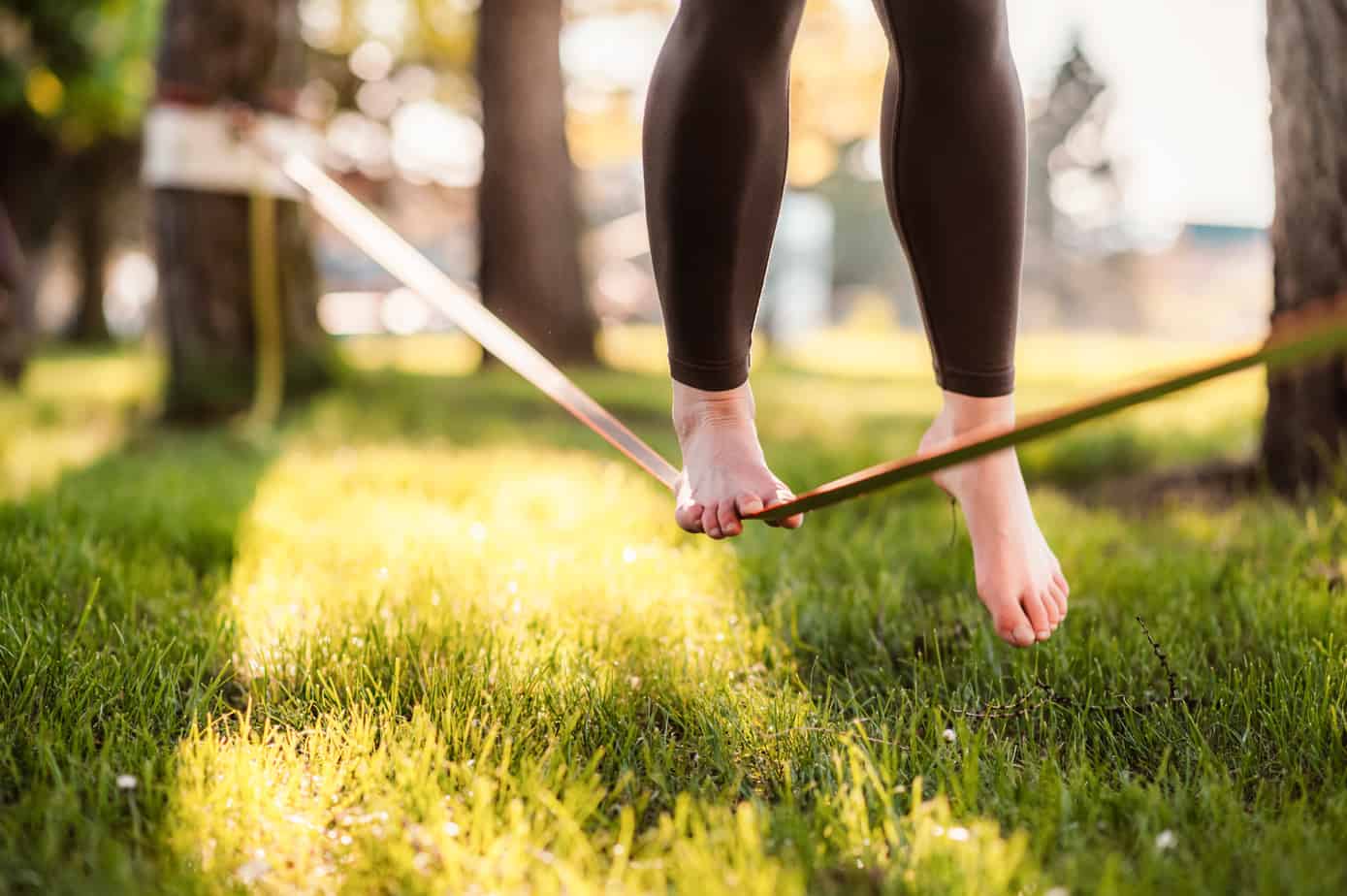When choosing a slackline, it’s important to note that each brand and model may have a different weight limit that it is rated to hold. Slacklines do not have a one-size-fits-all load limit so you have to check with your particular brand and model before purchasing to be safe.
The weight limit for a particular slackline is determined by the manufacturer and is generally as high as 300 lbs. Some popular slackline brands have a lower weight limit of around 240 lbs. Check with the manufacturer instructions to be sure.
While many child-specific slackline kits offer adult-size weight limits, you can also find kids’ sets with lower weight limits. Many children’s sets are often part of a larger product offering including other items such as monkey bars and rope ladders so double check the quality in this instance.
Exceeding the maximum weight limit may result in personal injury or damage to the slackline itself especially if the line snaps.
Slackline manufacturers have different weight limits
The weight limit for major slackline manufacturers and types of slacklines include the following examples:
- GIBBON Slacklines – Maximum weight limit of 240 lbs (108 kg) on select models.
- Slackline Industries – Maximum weight limit of 300 lbs (136 kg) on select models.
- Barefoot Slacklines – Maximum weight limit of 330 lbs (150 kg) on select models.
- Trailblaze Slackline – Maximum weight limit of 330 lbs (150 kg) on select models.
- Slacktivity – Maximum weight limit of 440 lbs (200 kg) on select models.
Remember to check each brand and model before purchasing to confirm the weight limit.
The width and length of slacklines varies
A wider slackline will give a larger person more stability and twice the area to stand on. You can choose the length of your slackline depending on far you’d like to walk.
The width of most slacklines are typically 1″ – 2.” Some European brands sell (often) hard-to-find widths such as 5/8″ and 35mm (1.37″) among others.
But for most slackliners, the standard 1 inch and 2 inch varieties are easy to find and suitable for a wide range of skill and experience levels. In general terms, newer slackliners often choose the wider 2″ style but some experienced slackliners suggest going right for the 1″ variety. It’s your choice.
Slacklines are sold in many lengths but the minimum slackline length you’ll want to look at is 16′ (5m). With a slackline, you need a certain amount on each end to wrap around the tree or other fastening device so you need some slack.
If you choose one shorter than this, the amplitude will be too great. You need a minimum length to enable the line to move properly without wavering too much when you climb on. Some wobbling is normal but a minimum slackline length of 16′ or 5m is necessary for success.
Get to know slackline webbing options to choose from
Slackline webbing – the slackline itself – is generally made of polyester or nylon so you have decisions to make when choosing your webbing.
Polyester slackline webbing is not as stretchy as nylon and therefore tends to be the choice for longer slacklines lengths.
Nylon slackline webbing is known for being more stretchable than polyester and are generally easier to set up. Often used for tricklining, waterlining and highlining.
Then you can choose from slacklines according to their webbing design:
Flat slackline webbing is flat in design as the name suggests and is the most popular option. Flat webbing ends to be lighter than other options.
Tubular slackline webbing is oval in design and is hollow in the middle. It’s thicker than a flat design and is popular with barefoot slackliners due its comfort combined with durability.
Threaded slackline webbing combines different materials with a threaded design for extra strength and durability. As such, it’s commonly used for highlining and other more dangerous styles of slacklining where safety and webbing strength is of paramount importance.
Recent Posts
Slacklining is a challenging activity that involves walking, balancing, and performing tricks on a flat piece of webbing stretched between two anchor points. It has become increasingly popular in...
Slacklining is a fun and challenging way to improve your balance, core strength, and overall fitness. Whether you're new to slacklining or a seasoned pro, incorporating a slackline workout routine...


